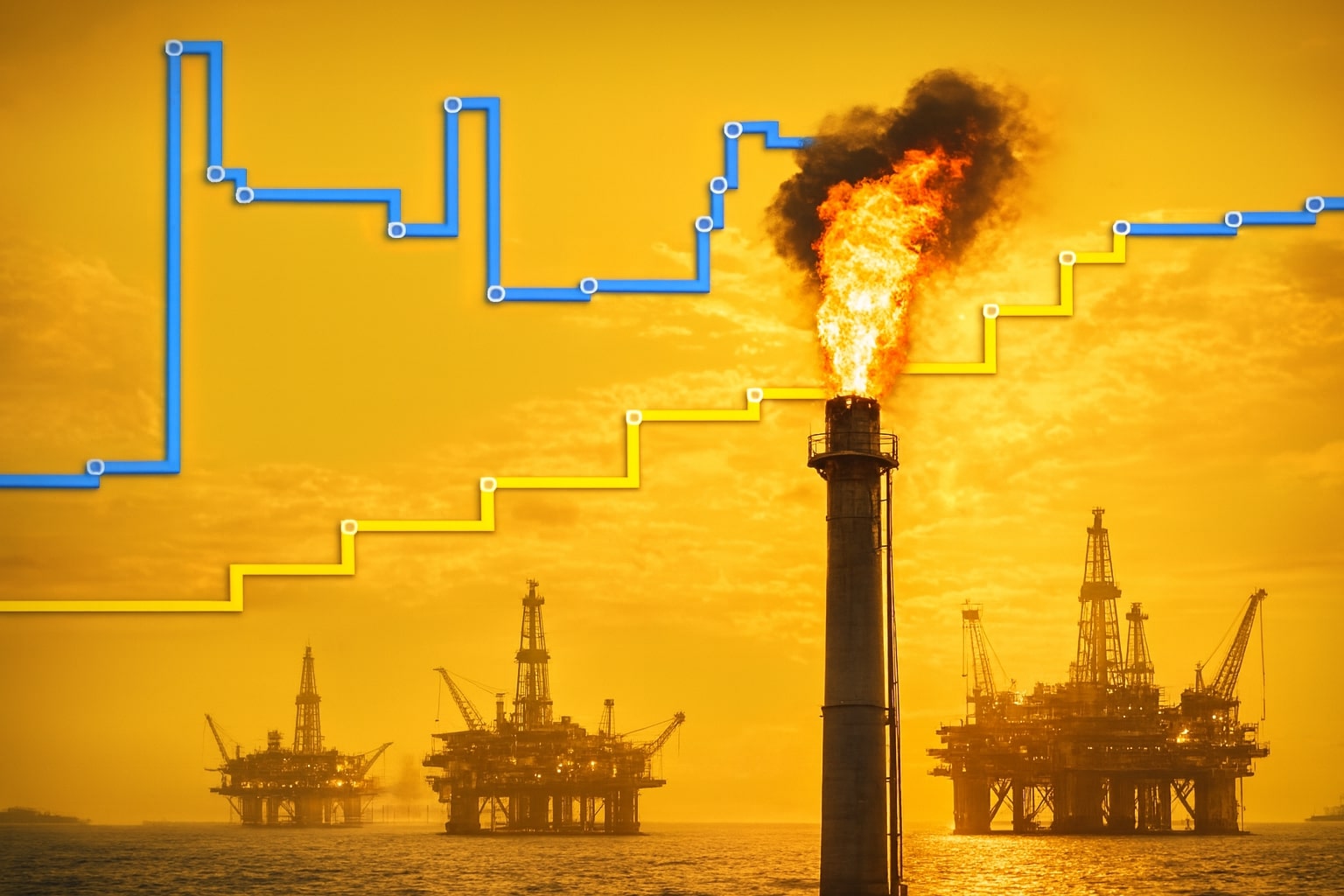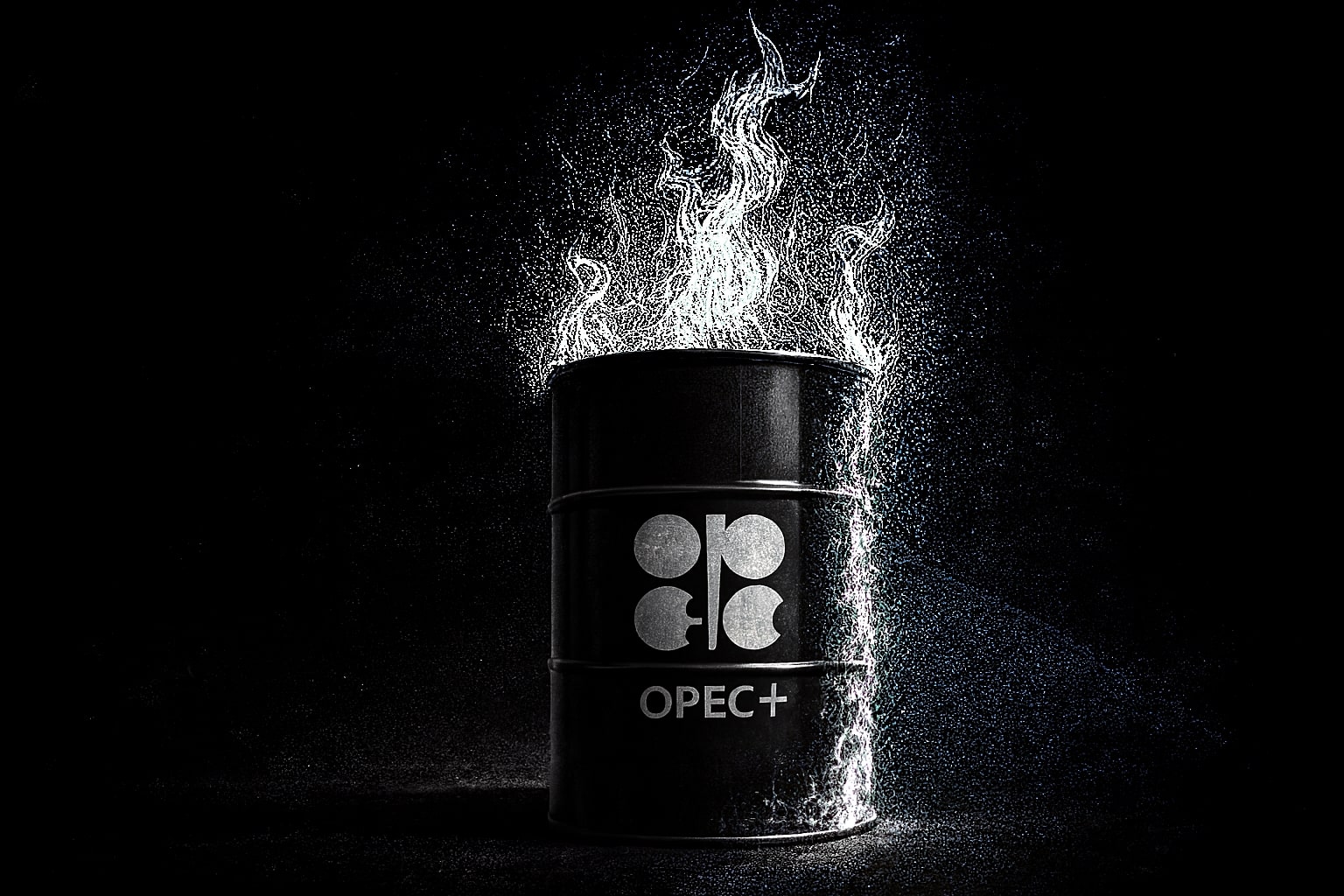
Natural Gas Price Forecast - (NG=F) Climbs to $4.62 as Cold Snap Fuels Demand and Traders Await EIA Report
Colder forecasts push Natural Gas (NG=F) to fresh highs near $4.62, with investors eyeing the EIA’s 11–17 Bcf build and strong production of 109.4 Bcf/d | That's TradingNEWS
Natural Gas (NG=F) Extends Rally Toward $4.75 as Cold Forecasts Collide With Storage Concerns
Natural Gas (NG=F) rose to $4.62 per MMBtu, gaining over 2.1% intraday, driven by forecasts for a colder-than-expected December that reignited heating demand across the U.S. The rally comes after months of oversupply and weak industrial consumption that kept prices near the $2.50–$3.00 range through most of 2025. Traders now face a critical test: whether the tightening winter weather can offset a persistent storage glut that remains 4.5% above the five-year average. The EIA storage report due later today is projected to show an 11–17 Bcf increase, slightly above historical norms, signaling that while winter demand is rising, production continues to outpace withdrawals.
Colder December Forecast Sparks Buying Momentum
The latest NOAA weather models shifted decisively colder for early December, with sub-freezing temperatures expected across the Midwest and Northeast. That adjustment immediately lifted futures, with prices peaking at $4.6275/MMBtu during New York trading hours. Market participants had been bracing for mild conditions, but the abrupt change fueled aggressive short covering by funds positioned for a seasonal lull. Heating degree days (HDD) projections for December rose by 12% week-over-week, marking the strongest increase since January 2024. Traders anticipate that if these forecasts persist, U.S. natural gas demand could climb above 110 Bcf per day, tightening balances through December.
Production Strength Remains a Structural Obstacle
Despite bullish weather sentiment, supply-side data remains heavy. Production stood at 109.4 Bcf/d, up 7.5% year-over-year, driven by robust output from the Permian and Appalachian basins. Record rig efficiency and associated gas from oil drilling have swelled inventories. Domestic storage currently sits at 4.5% above the five-year average, though only 0.3% lower than the same period last year, indicating that surpluses persist even after early winter draws. Unless sustained cold fronts trigger weekly withdrawals above 100 Bcf, analysts warn that upside potential may remain capped near the $4.90–$5.10 zone.
EIA Report Expectations and Market Sensitivity
The market’s next catalyst is the EIA weekly report, expected to show a build of 11–17 Bcf versus a five-year average injection of +12 Bcf. Any deviation below that range would validate tightening fundamentals and could extend the rally toward $4.75, corresponding to the 38.2% Fibonacci retracement level. Surpassing that barrier would open further gains toward $4.91 and $5.18, according to momentum traders monitoring the short-term resistance band. Conversely, a larger-than-expected build would reinforce concerns about stagnant industrial consumption, potentially triggering profit-taking back to $4.38 support.
Technical Setup: Bullish Bias with Overhead Resistance
Chart structure shows Natural Gas (NG=F) breaking above the $4.20 support zone, confirming a near-term bullish reversal. The 50-day EMA has flattened, suggesting consolidation, while the 100-day EMA sits near $4.57, serving as the current inflection level. The RSI remains modestly positive, around 58, providing room for further upside before overbought conditions emerge. A daily close above $4.75 would invalidate the prior downtrend channel, with momentum likely extending toward $5.00, last seen in February 2025 during the polar vortex event.
Weather Demand vs. Structural Supply Overhang
This rally exposes a fundamental tension between short-term weather-driven optimism and long-term supply resilience. The U.S. gas system’s capacity now exceeds 103 Bcf/d due to pipeline expansions in the Haynesville and Marcellus regions. LNG feedgas demand, though near a record 14.8 Bcf/d, has failed to absorb the domestic oversupply fully. Furthermore, the Freeport LNG facility operates below nameplate after October maintenance, trimming export flows by 0.6 Bcf/d. Unless exports accelerate or production eases, analysts expect continued volatility between $4.20 and $4.90.
Industrial Consumption and Price Elasticity
Industrial demand remains tepid at 22.4 Bcf/d, roughly 4% lower YoY, reflecting weak petrochemical margins and reduced fertilizer output. That sector’s muted participation limits how fast fundamentals can tighten. However, residential and commercial heating demand is expected to surge 18% month-on-month, partially offsetting industrial softness. Regional hub spreads have widened — Henry Hub trades at $4.47, while SoCal Citygate jumped to $4.78, reflecting localized scarcity amid colder Pacific Northwest forecasts.
Volatility Returns as Funds Cover Shorts
The rally from $4.20 to $4.62 was largely fueled by position adjustments rather than new speculative longs. CFTC data show managed money net shorts shrinking by 15% week-over-week, as funds cut bearish exposure ahead of the EIA print. This dynamic has created a self-reinforcing short-covering rally, with intraday volatility spiking 18% relative to last week’s average. Options implied volatility (IV) for December contracts rose to 62%, underscoring elevated uncertainty heading into the final trading weeks of November.
Read More
-
SMH ETF: NASDAQ:SMH Hovering at $350 With AI, NVDA and CHIPS Act Fueling the Next Move
16.12.2025 · TradingNEWS ArchiveStocks
-
XRP ETFs XRPI and XRPR: Can $1B Inflows Lift XRP-USD From $1.93 Back Toward $3.66?
16.12.2025 · TradingNEWS ArchiveCrypto
-
Natural Gas Price Forecast: NG=F Falls to $3.80–$3.94 as Warm Winter Kills $5.50 Spike
16.12.2025 · TradingNEWS ArchiveCommodities
-
USD/JPY Price Forecast - USDJPY=X Slides, BoJ 0.50% Hike, Fed Cut and NFP Set the Next Big Move
16.12.2025 · TradingNEWS ArchiveForex
Regional Basis Prices Reflect Supply Strain
Spot markets show diverging patterns across major hubs. El Paso Permian remains under pressure at –$0.69/MMBtu, while Westcoast Station 2 and Tenn Zone 6 200L North trade up $0.66–$0.65, supported by regional demand. The spread between Henry Hub and Northeast citygates widened to $1.08, the largest in two months, indicating bottlenecks in regional distribution networks. Seasonal maintenance and pipeline constraints through the Rockies and Midwest have compounded short-term delivery tightness.
Market Psychology and Seasonal Positioning
Investor sentiment remains cautiously bullish, reflecting historical seasonality. Over the past decade, Natural Gas (NG=F) prices have risen in seven of ten Q4 periods, averaging a +9.3% gain from mid-November through late December. Traders are positioning for a repeat of that pattern, though the margin of error hinges entirely on sustained cold anomalies. If December turns milder than forecast, speculative demand could evaporate swiftly, sending prices back to the $4.00–$4.10 consolidation range.
Medium-Term Outlook and Policy Implications
The broader macro backdrop favors moderate upside bias. Global LNG demand continues to strengthen, with Europe’s storage levels at 97% capacity but withdrawal rates increasing as temperatures fall. U.S. producers like EQT (NYSE:EQT) and Chesapeake Energy (NASDAQ:CHK) have hedged a significant portion of 2025 output at $3.80–$4.10/MMBtu, reflecting confidence in a stable pricing floor. Policy dynamics also play a role — the Biden administration’s LNG export pause review remains under consideration, but traders now price a lower probability of new restrictions, which supports medium-term sentiment.
Verdict: Natural Gas (NG=F) — BUY with Near-Term Upside to $4.90
At $4.62, Natural Gas (NG=F) presents a tactical buying opportunity within a weather-driven uptrend. The combination of colder forecasts, easing storage surpluses, and shrinking short interest supports a move toward $4.90–$5.10 by early December. A break below $4.20 would invalidate the bullish structure, but momentum currently favors buyers. The fundamental balance between resilient supply and rising heating demand will dictate whether this rally extends into Q1 2026 or stalls near resistance.



















